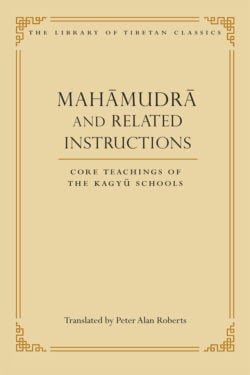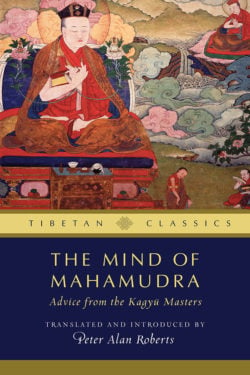Peter Alan Roberts

Peter Alan Roberts was born in Wales and lives in Hollywood, California. He earned a BA in Sanskrit and Pali and a DPhil in Tibetan Studies from Oxford University (Harris-Manchester College). For more than thirty years he has been working as an interpreter for lamas and as a translator of Tibetan texts. He specializes in the literature of the Kagyü and Nyingma traditions with a focus on tantric practices, and he is the author of The Biographies of Rechungpa.
Books, Courses & Podcasts
Mahāmudrā and Related Instructions
The Kagyü school of Tibetan Buddhism began in the eleventh century with such renowned figures as Marpa and Milarepa, and its seminal meditative traditions are Mahāmudrā and the six Dharmas of Nāropa. Mahāmudrā teachings focus on the cultivation of profound insight into the nature of the mind. The Mahāmudrā texts in this volume include a lucid work by the celebrated master Tselé Natsok Rangdröl and works by the twelfth-century master Shang Rinpoche, the great Third Karmapa, the Eighth Tai Situ, and Drukpa Pema Karpo. The volume also contains an inspirational work by Gampopa, the Drigung Kagyü root text, The Single Viewpoint, the Sixth Shamarpa’s guide to the six Dharmas of Nāropā, and finally an overview of tantric practice by Dakpo Tashi Namgyal, author of the famous Moonlight of Mahāmudrā. The texts in this volume were selected by the preeminent scholar of the Kagyü school, Khenchen Thrangu Rinpoche.
Learn more about the Library of Tibetan Classics
Learn about becoming a benefactor of the Library of Tibetan Classics
Read the biographies of Gampopa, Sherab Jungne, Lama Shang, and the Third Karmapa, Rangjung Dorje at the Treasury of Lives.
The Mind of Mahāmudrā
Mahāmudrā is a simple, direct method for looking beyond our thoughts to the very nature of conscious experience. It is said mahāmudrā is not attained not because it is too difficult but because it is too easy, not because it is too far but because it is too close, and not because it is hidden but because it is too evident.
The Mind of Mahāmudrā highlights this central meditation practice of the Kagyü school of Tibetan Buddhism through six texts ranging from the twelfth-century to the seventeenth and including such celebrated authors as Lama Shang and the Third Karmapa. Eminent scholar Peter Alan Roberts draws on his thirty-plus years of experience of translating for Tibetan lamas to illuminate these benchmark translations.
Read the biographies of Lama Shang and the Third Karmapa, Rangjung Dorje at the Treasury of Lives.


